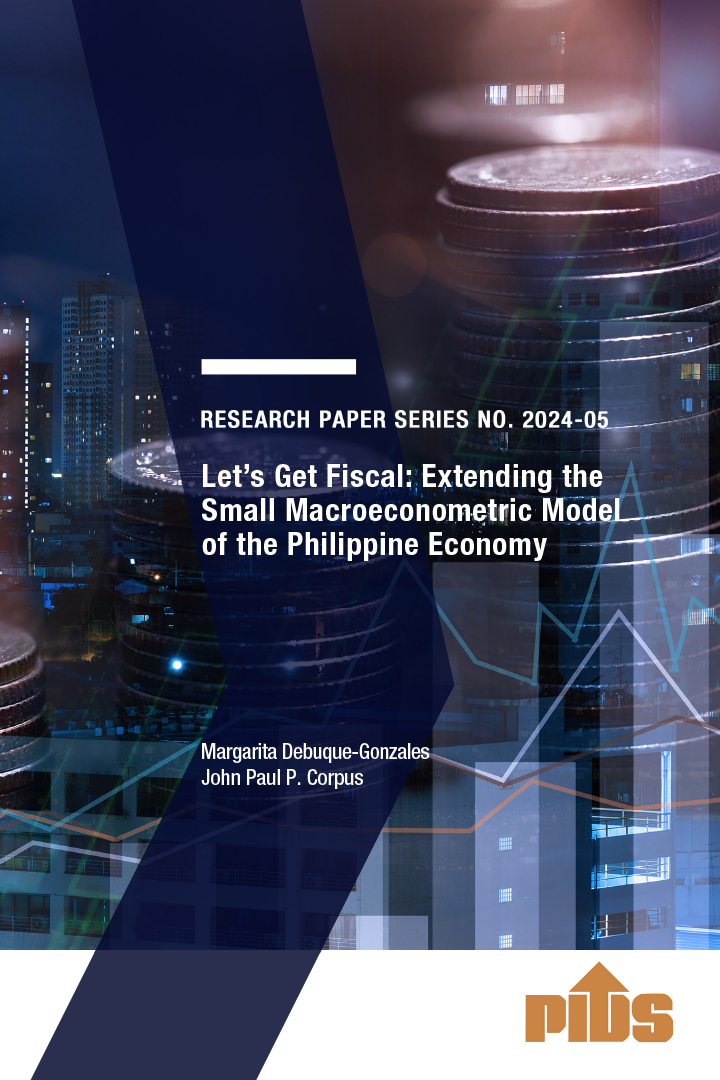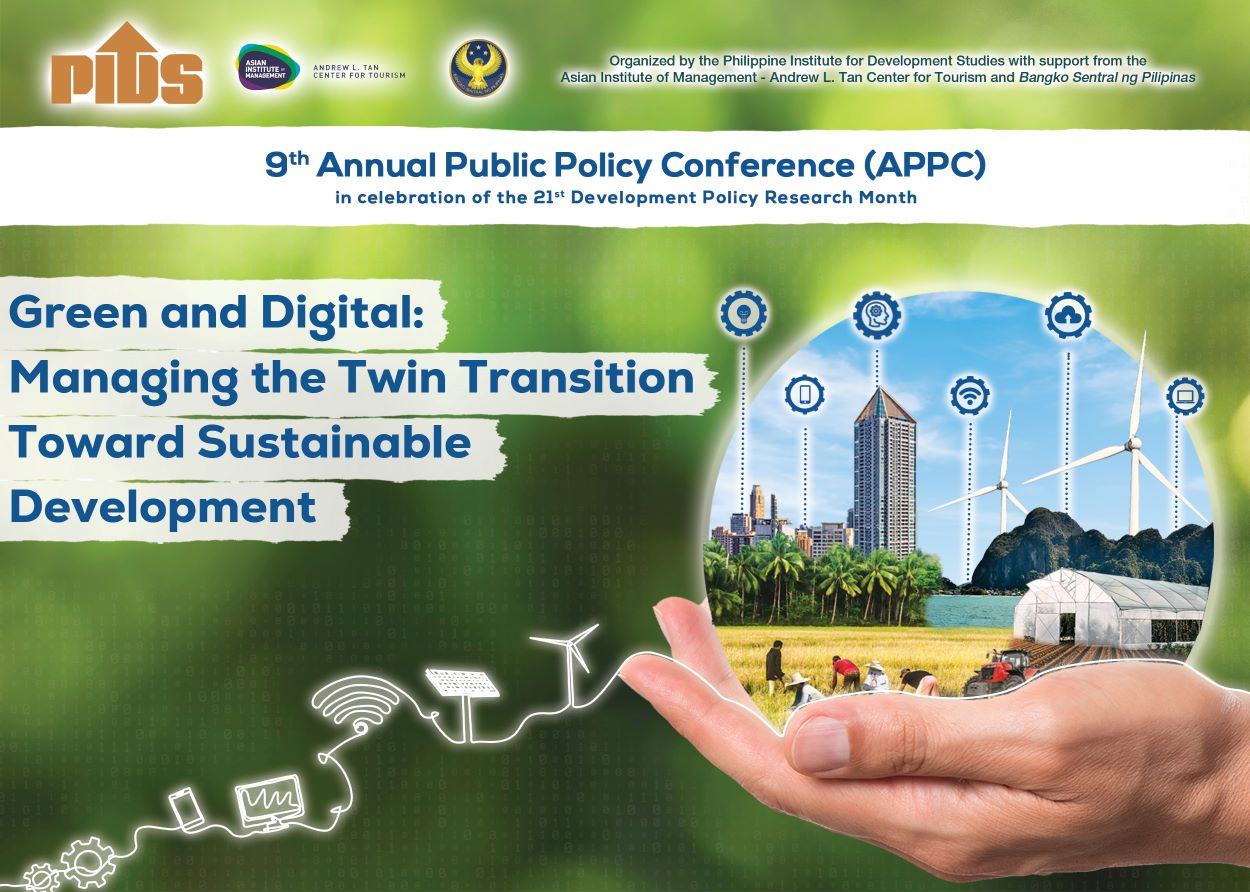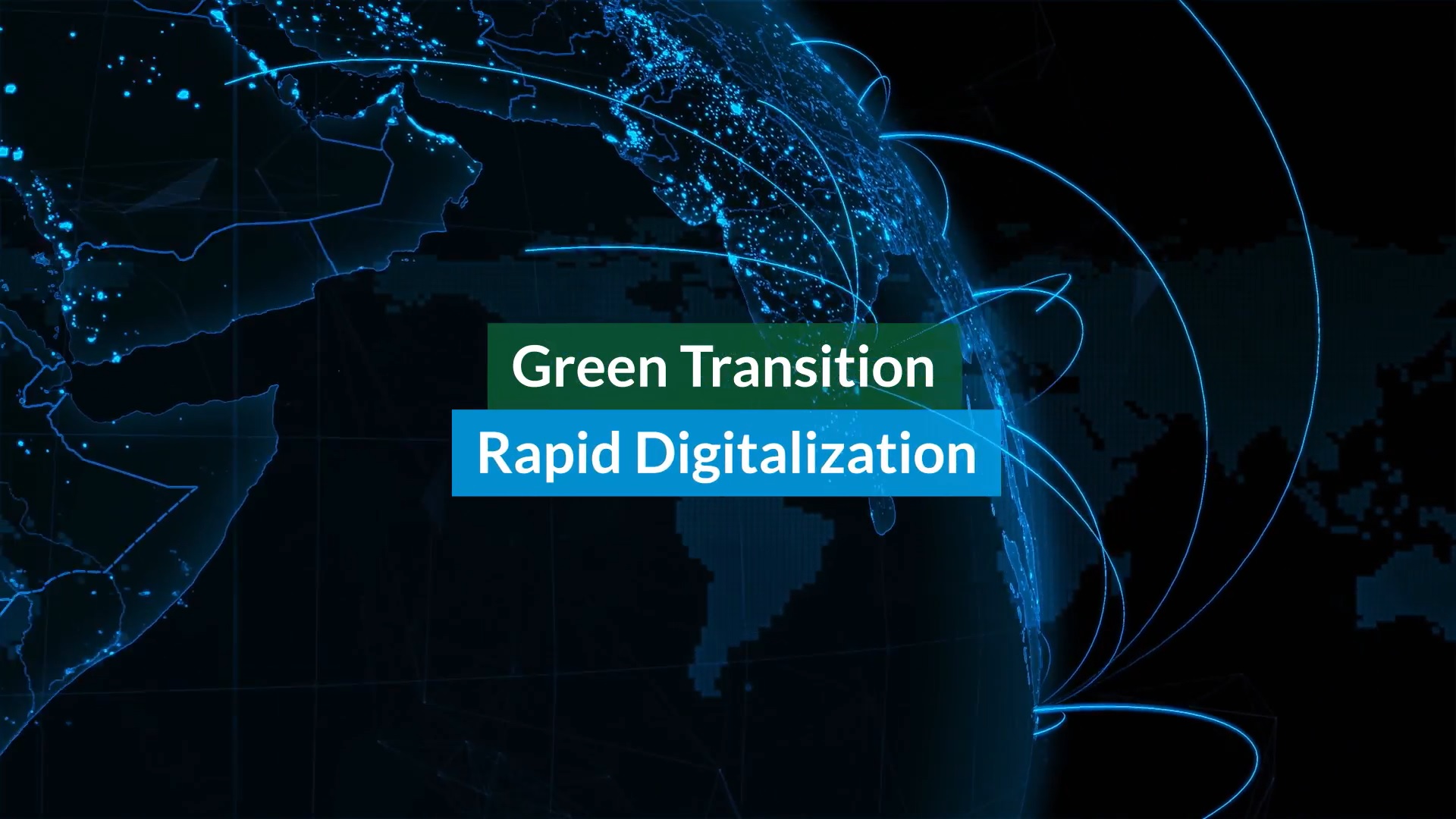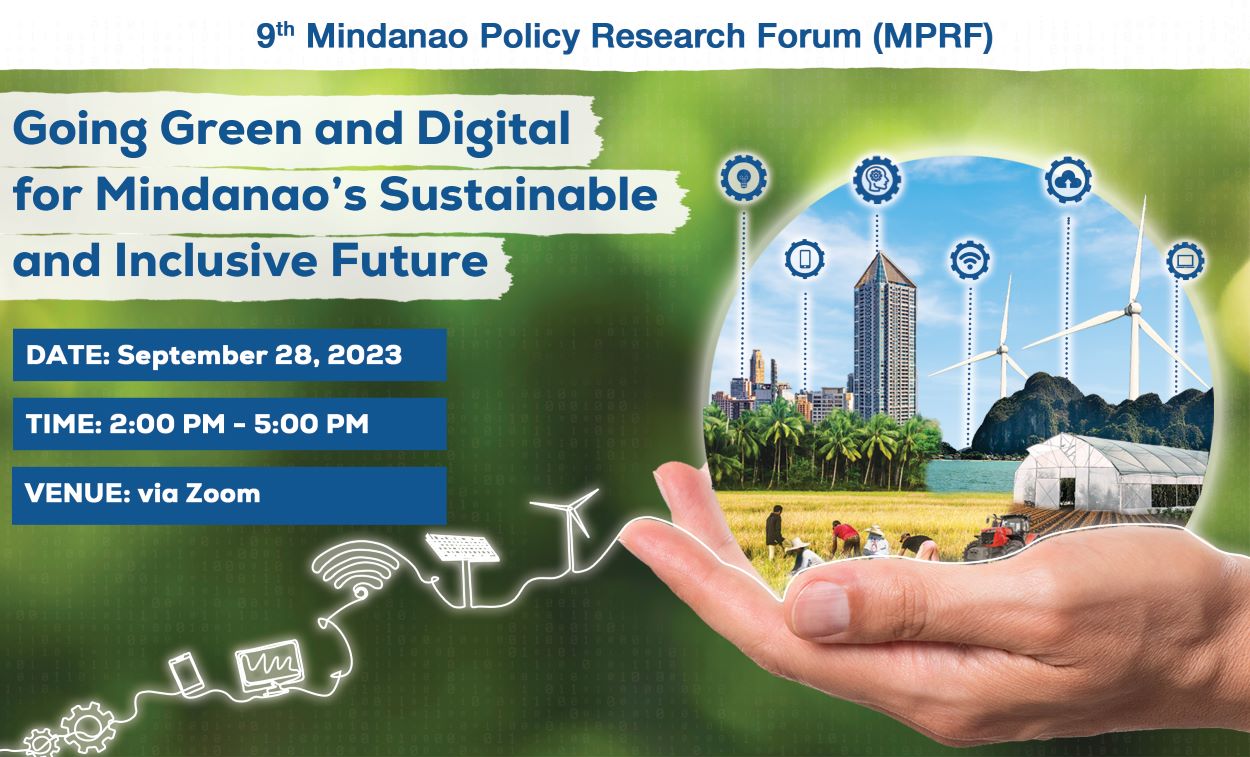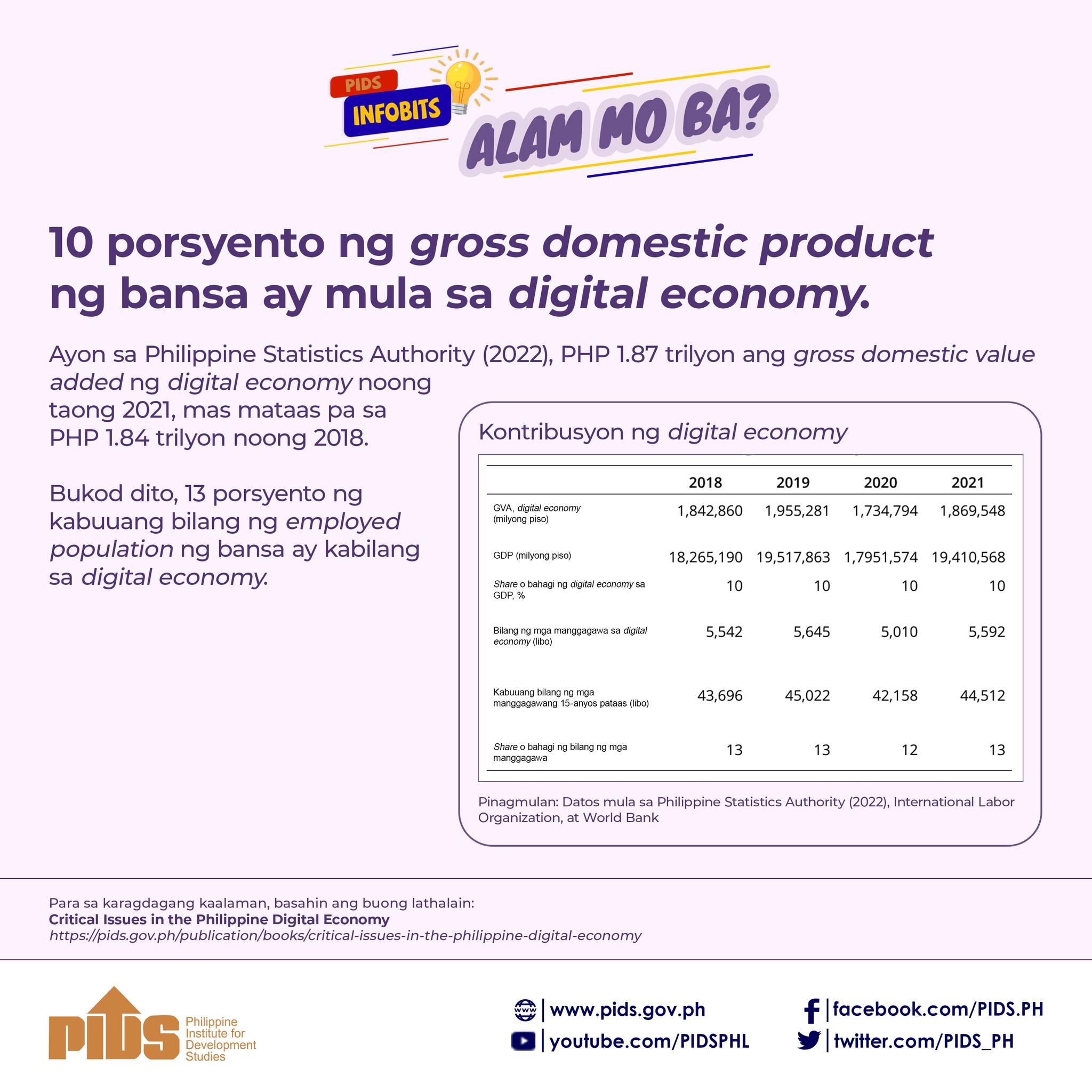Digital economy is beneficial but it has to be regulated.
According to Philippine Institute for Development Studies (PIDS) president Gilberto Llanto, the digital economy is “arguably changing the landscapes of job, product, and service markets”.
Digitization, big data, advanced analytics, and disruptive technologies interact in a variety of ways are creating new waves of innovation, productivity, and growth in a manner that has not been seen before,” he said at the launch last month of the Regional Inclusive Growth Project Consumer Unity and Trust Society [CUTS], a joint project of PIDS and CUTS International. The event was held at the PIDS Office in Quezon City.
Citing significant benefits of digital economy, Llanto said governments are using digital infrastructure to improve the delivery of public services such as health and education, among others, making these more inclusive.
The business sector, such as financial technology firms, are also taking advantage of digital tools and systems in competing with traditional brick-and-mortar private lending institutions to provide financial products and services to those who have been financially excluded, especially those in the rural areas,” he added. Llanto also emphasized that the shift to online trade and services has resulted to quick response to varying consumer preferences in terms of product or service availability, quality, and affordability.
For instance, the retail sector has successfully used digital technologies to create effective database management systems, client-server platforms, enterprise planning software, computerized management tools for inventory and product and services delivery. These all contribute to improve the efficiency of businesses and their ability to cope with the growing demands of consumers,” Llanto explained. According to him, online shops such as Lazada and ride-hailing services in the Philippines have also responded well to consumer demands by using disruptive technologies, which connect buyers/consumers and sellers/providers efficiently in the goods and services markets. But along with the benefits of digitization are the challenges posed by cyber security, data and privacy breaches, cyber bullying, assignment of liability, and a host of other challenges.
Llanto said it is important for regulators to develop a sense of what and how to regulate digital economy, and consider the need to encourage innovations and experimentations that may create new pathways for inclusive services. He also underscored the importance of educating consumers and building their capacities to navigate the digital world in order to increase their level of welfare. In support of Llanto’s statements, CUTS International Senior Research Associate Ankit Pingle stressed the need for governments, consumers, and service providers to collaborate among each other to prevent and resolve regulation barriers and bottlenecks.
Government cannot provide all the necessary services to the public. Although they do it for profit, private companies are there to supply needed services which should be made affordable to consumers. Hence, regulations should always follow an optimal point so it does not fall either on too much or too little regulation,” said Pingle.
During the launch, Pingle also shared one of India’s most successful digital innovation—the Aadhaar ID system. The Aadhaar system assigns a unique 12-digit identification number, called Aadhaar number, to all residents of India, based on the secure registration of their biometric data: fingerprints, iris and facial recognition. It enables all residents to access their fundamental right of being recognized by the Indian government, allowing them to avail of numerous services such as social benefits, medical care, and opening a bank account, among others. The launch highlighted the need to strengthen the digital economy in India, Philippines, and Viet Nam. The central theme of the activity focused on understanding the necessity of having in place optimal regulations for new-age businesses to ensure inclusiveness and to keep innovation on track.
According to Philippine Institute for Development Studies (PIDS) president Gilberto Llanto, the digital economy is “arguably changing the landscapes of job, product, and service markets”.
Digitization, big data, advanced analytics, and disruptive technologies interact in a variety of ways are creating new waves of innovation, productivity, and growth in a manner that has not been seen before,” he said at the launch last month of the Regional Inclusive Growth Project Consumer Unity and Trust Society [CUTS], a joint project of PIDS and CUTS International. The event was held at the PIDS Office in Quezon City.
Citing significant benefits of digital economy, Llanto said governments are using digital infrastructure to improve the delivery of public services such as health and education, among others, making these more inclusive.
The business sector, such as financial technology firms, are also taking advantage of digital tools and systems in competing with traditional brick-and-mortar private lending institutions to provide financial products and services to those who have been financially excluded, especially those in the rural areas,” he added. Llanto also emphasized that the shift to online trade and services has resulted to quick response to varying consumer preferences in terms of product or service availability, quality, and affordability.
For instance, the retail sector has successfully used digital technologies to create effective database management systems, client-server platforms, enterprise planning software, computerized management tools for inventory and product and services delivery. These all contribute to improve the efficiency of businesses and their ability to cope with the growing demands of consumers,” Llanto explained. According to him, online shops such as Lazada and ride-hailing services in the Philippines have also responded well to consumer demands by using disruptive technologies, which connect buyers/consumers and sellers/providers efficiently in the goods and services markets. But along with the benefits of digitization are the challenges posed by cyber security, data and privacy breaches, cyber bullying, assignment of liability, and a host of other challenges.
Llanto said it is important for regulators to develop a sense of what and how to regulate digital economy, and consider the need to encourage innovations and experimentations that may create new pathways for inclusive services. He also underscored the importance of educating consumers and building their capacities to navigate the digital world in order to increase their level of welfare. In support of Llanto’s statements, CUTS International Senior Research Associate Ankit Pingle stressed the need for governments, consumers, and service providers to collaborate among each other to prevent and resolve regulation barriers and bottlenecks.
Government cannot provide all the necessary services to the public. Although they do it for profit, private companies are there to supply needed services which should be made affordable to consumers. Hence, regulations should always follow an optimal point so it does not fall either on too much or too little regulation,” said Pingle.
During the launch, Pingle also shared one of India’s most successful digital innovation—the Aadhaar ID system. The Aadhaar system assigns a unique 12-digit identification number, called Aadhaar number, to all residents of India, based on the secure registration of their biometric data: fingerprints, iris and facial recognition. It enables all residents to access their fundamental right of being recognized by the Indian government, allowing them to avail of numerous services such as social benefits, medical care, and opening a bank account, among others. The launch highlighted the need to strengthen the digital economy in India, Philippines, and Viet Nam. The central theme of the activity focused on understanding the necessity of having in place optimal regulations for new-age businesses to ensure inclusiveness and to keep innovation on track.

